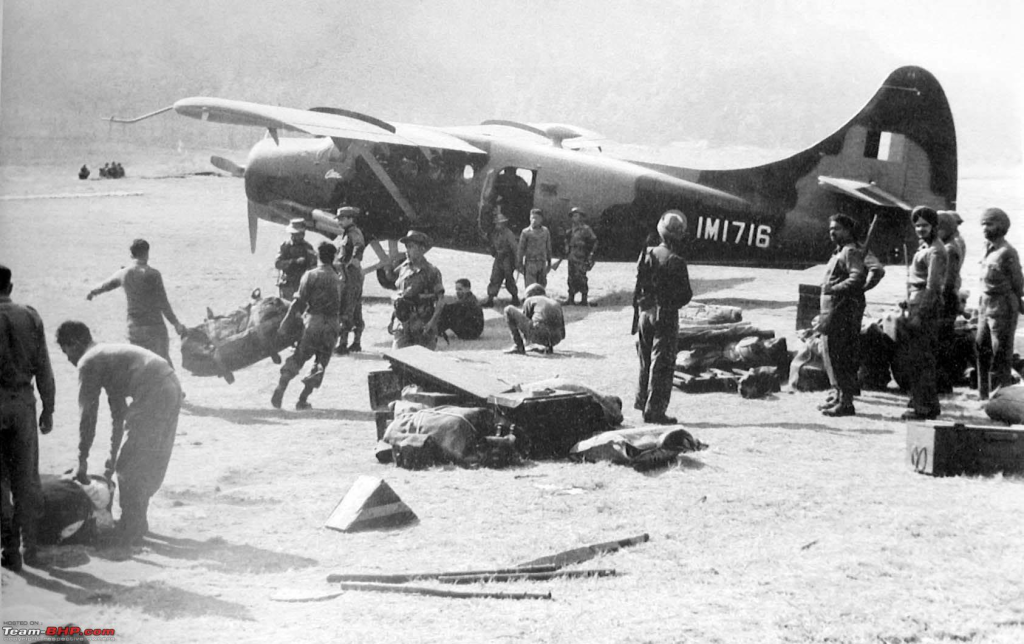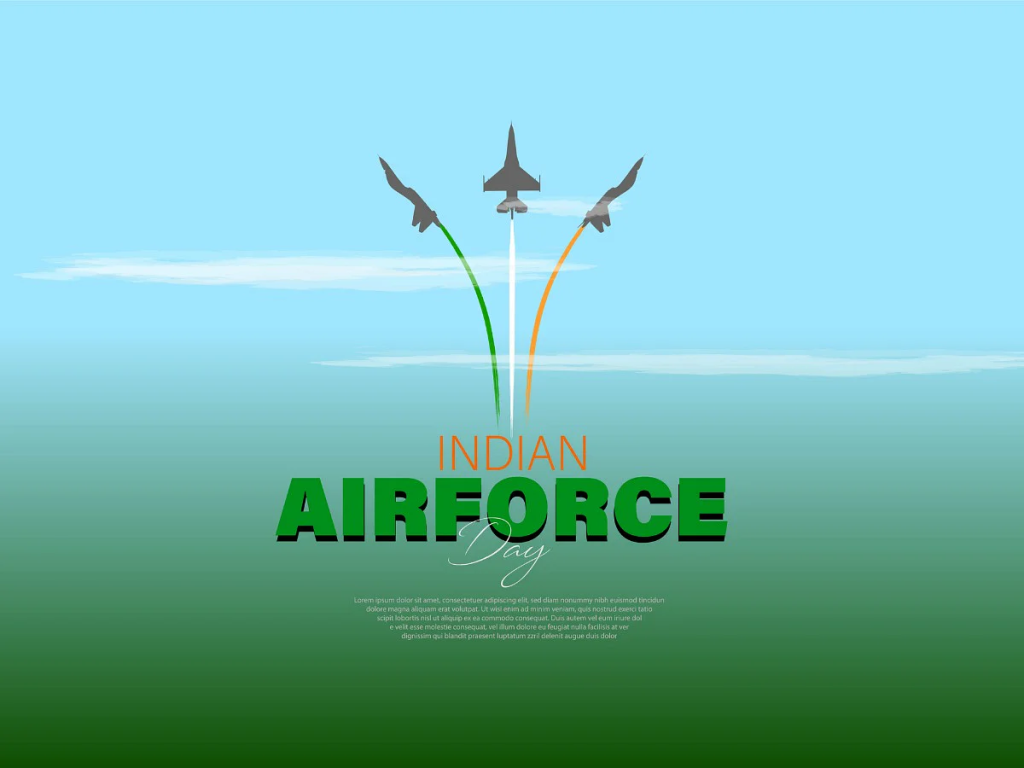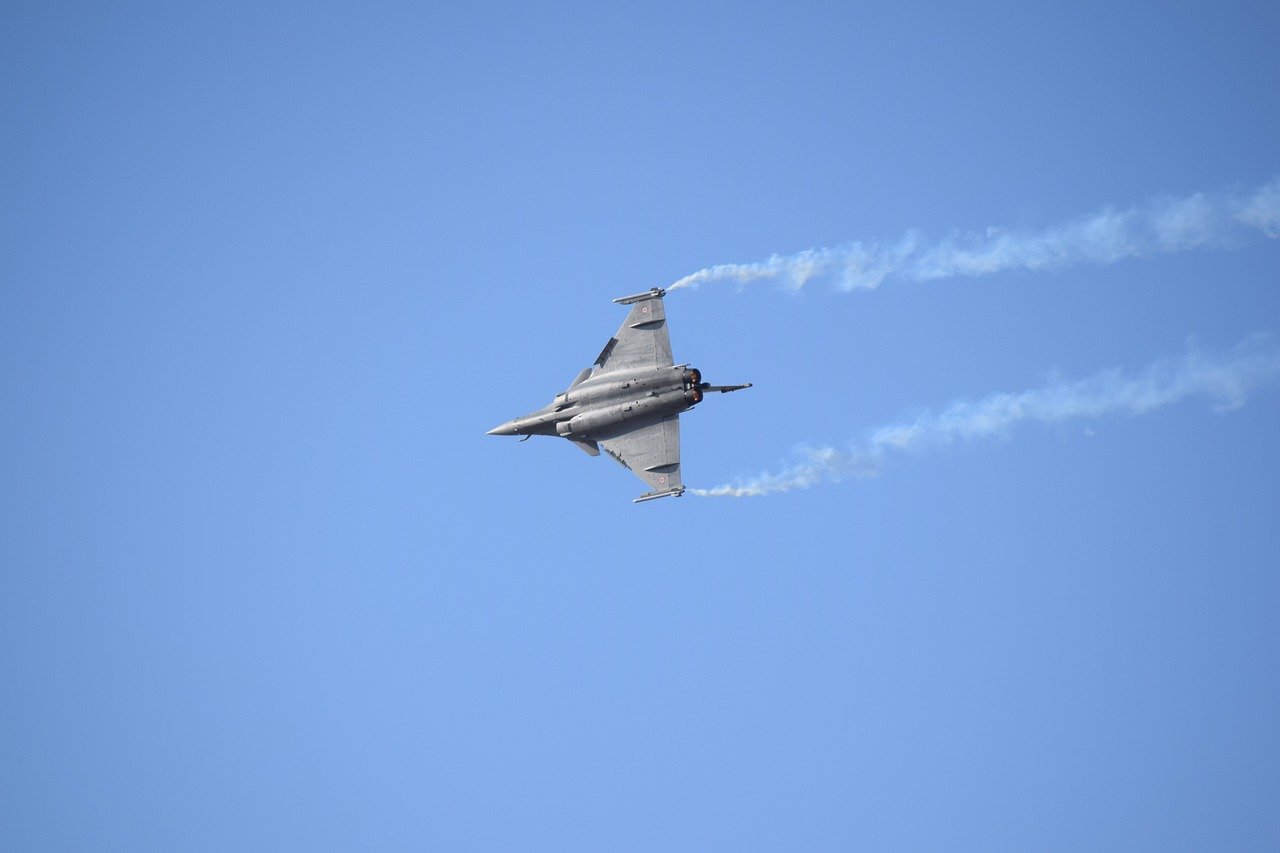Indian Airforce – The backbone of National Defense
- October 8, 2022
- Trends
The Indian Air Force (IAF) introduced the locally constructed Light Combat Helicopter (LCH) on Monday, enhancing its capacity to carry out assault missions at great heights and supporting the nation’s record for producing home-grown defense gear. It is also referred to as the “Bharatiya Vayu Sena,” was created by the British Empire on October 8, 1932.
The journey of IAF has not been very easy. Over the years it has undergone huge progress and has developed into a formidable opponent. What has the Indian Airforce become over the years is a question often asked. So, let’s answer it
History of the Indian Air Force

The Indian Air Unit was established on October 8th, 1932 as a support strength for the British Royal Air Force. The Indian Airforce has made many outstanding accomplishments throughout its history. The primary duty of the Indian Airforce is to secure Indian airspace by engaging in airborne combat amid a crisis. In addition to defense, the IAF is essential to aid, recovery, and transportation missions all through extreme disasters.
The Indian Airforce, which now operates a broad variety of equipment, has grown to become the fourth-largest air force on the planet. This year, on October 8, the IAF will commemorate the 90th anniversary of its founding. In Indian Airforce’s 90-year journey, the IAF has evolved into a combat-ready and cutting-edge air force.
Post 1947-era

Indian authorities decided to develop a robust military infrastructure following the independence from the British. After ceding control to Indian authorities, Indian Forces played a crucial part in World War II. But most of the B-24 Liberator bombers were destroyed by British forces. IAF continued to use vampires and French-built Mysteres after that. Later, the IAF introduced bombers produced in France, including Canberra, Hunter, and Toofani. Up to 1958, the IAF ran 33 attack plane units. IAF was instrumental in protecting Kashmir during this battle. The first aircraft to take Indian soldiers to the valley of Kashmir was an IAF Dakota. All assault and tactical assistance operations were being done by IAF.
India lost the 1962 conflict to China. The IAF’s engagement in this conflict was strictly restricted to supporting military positions. For not employing the IAF offensively versus Chinese forces, the then-government came under fire from several defense professionals. The IAF openly fought Pakistan in air combat with 28 contingents, destroying 94 Pakistani aircraft. Despite having a quantitative advantage over the Pakistani air force, IAF lagged in capability because the Pakistani Air Force was using a deadly F-86 that they acquired from America. Nevertheless, the IAF exploited older aircraft to strike far within Pakistani territory and demolish airbases.
Between the late 1960s to late 1990s

The Indian Airforce had purchased the HAL-built HF-24 Marut in the late 1960s, and in the early 1970s, the IAF began obtaining Mig 21 aircraft from the Soviet Union. MIGs were crucial in the 1971 battle against Pakistan. IAF effectively ruled the air throughout this conflict and effectively pursued Pakistani jets. IAF purchased Mig 21 in considerable quantities after being pleased with the Soviet aircraft’s combat capability.
They acquired French Sepecat Jaguars from Britain in 1979 together with Soviet technologies. A hypersonic attack aircraft jet named Jaguar is now in use by the IAF after receiving upgrades. As science advanced over time, Pakistan bought the most recent multirole F-16 from America in the 1980s. Following that, the IAF opted to introduce the Mirage -2000 multi-role jet, which is now among the IAF’S arsenal’s most formidable planes, in 1985. During the Kargil conflict and more notably in the Balakot attacks, Mirage demonstrated its capability.
With the purchase of international aircraft, India decided to advance Indian Airforce’s indigenous aircraft technology to modernize its ailing Mig 21 fleet. The production of lightweight fighter jets began in 1983, and the first airplane made its first-ever takeoff in 2001. Later, in 2015, the plane entered service with the Indian Airforce.
In the 21st Century

The Kargil War of 1999 followed. The recently added weapons were allowed to demonstrate their tactical prowess in a challenging environment. In Kargil, Mirage-2000 aircraft were utilized at a height of 32000 feet for the very first time. On May 26, 1999, the Indian Airforce began Project Safed Sagar. By June 11th, all mission goals had been accomplished. IAF first supported surface troops by delivering supplies, but eventually expanded to strike hostile strongholds. During the Kargil conflict, the Indian army was able to easily repel Pakistani attackers by using the Mirage-2000 system which turned out to be a game-changer.
The state began buying the contemporary twin-engine SU-30 from Russia after learning lessons from the Kargil war. Hindustan Aeronautical Limited later produced it in India with permission using modifications unique to India. The SU30 MKI is the cornerstone of the Indian Airforce and would continue to be its foremost lethal attacker for the following twenty years. The deal for Rafales and S-400s is being realized and the jets are being delivered in multiple batches. Recently, the Indian Airforce inducted the LCH Prachand choppers which were completely developed in India.
Operations of the Indian Airforce

The IAF is the airborne branch of the Indian armed powers. The list of main duties includes defending Indian airspace and carrying out aviation operations throughout military conflicts. More than 170,000 people are working for the Indian Airforce. The general in charge of the defense is the President of India. The actual control of the air force is under the authority of the Chief of Air Staff.
In addition to defending Indian sovereignty and state security from all dangers, the Indian Airforce also offers assistance in times of environmental disaster. The Indian Air Force offers regional and situational transportation capacities as well as airpower for the Indian Army on the frontlines. The Indian Airforce is composed of extremely skilled technicians and aircrews and has full rights to cutting-edge tactical equipment, giving India the ability to conduct fast reactive evacuation, search-and-rescue (SAR) missions, and container plane transportation of aid to afflicted areas.
There are two functional commands and five operational commands in the air force. An Air Officer Commanding-in-Chief with the title of Air Marshal is in charge of every unit. A functional unit’s job is to ensure battle preparedness, and the goal of an operational unit is to execute tactical missions employing planes inside its zone of Jurisdiction.
Airforce Day 2022

India is observing its 90th Air Force Day. The president, the head of the Indian Airforce, and top military officers attend the nation’s celebration of this day on October 8 each year. The festivities include an aerial spectacle when the most important and classic jets put on a beautiful performance.
Nearly 80 aircraft, along with a single-engine MiG-21, shall perform a spectacular display this weekend at Chandigarh’s Sukhna Lake. A redesigned battle outfit will also be unveiled by the army commander.
The jet will demonstrate 5 structures on October 8; these include a three-aircraft arrangement by LCH, an Eklavya structure, Sekhon, and more. The Light Combat Helicopters (LCH) produced in India, 10 being given to the air force and 5 to the army will also be a part of the parade. During the flypast, the LCH will be one of the aircraft.
Another one for the celebration. The “Sekhon” arrangement, will include a Rafale, Tejas, Mirage 2000, and Jaguar. The Globe and Eklavya formations are the two additional forms, that will be a part of the celebration. A C-17 heavy equipment plane and 9 Hawk-132 from the Surya Kiran crew will be sent out for the Globe assembly, while Mi-35 assault choppers with four Apache copters, will lead the Eklavya lineup. Finally, an IL-76 and two AN-32 planes will lead the Big Boy group. The event won’t include Cheetah or Chetak helicopters.
In this spectacular Air Force Day flypast, numerous fighter jets soared through the skies like swift eagles, showcasing the majesty of the Indian Air Force.
To commemorate this momentous occasion, custom coins are the perfect choice. Some may ask: Can you customize coins in different shapes? The answer is yes! You can choose a custom shape of your choice, such as square, triangle, star, or hollow.
Custom coins are more than just a piece of metal; they’re a witness to history. They immortalize the glorious moments of Air Force Day and pass on the admiration and praise for the warriors of the skies for generations to come.
Future of the Indian Air Force

The challenges facing the Indian Airforce are expanding as newer innovations develop globally and the China-Pakistan connection strengthens daily. To overcome all of these obstacles, IAF must make significant investments in the creation and acquisition of the most advanced tools and equipment required to protect our skies. 36 Rafales from France and S-400s from Russia greatly expanded the combat capability of the IAF. However, India must build organizational ability to meet its military requirements independently. India’s private sector needs to be encouraged to start producing defensive materials including cutting-edge weapons.
If you want to share anything on a topic you care deeply about, send us your submission. Here are the guidelines
- Want to Work in Publishing? Here’s how you can go about it
- Top Features to Look for When Choosing a Hosting Provider
- New to reels? Start Here with these easy ideas you can try today
- The Role of Visual Branding in Building Stronger Client Relationships
- Spread joy with books with Weave Library Project






